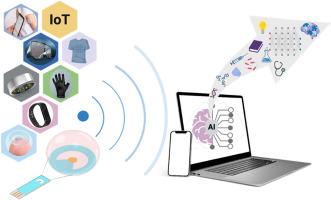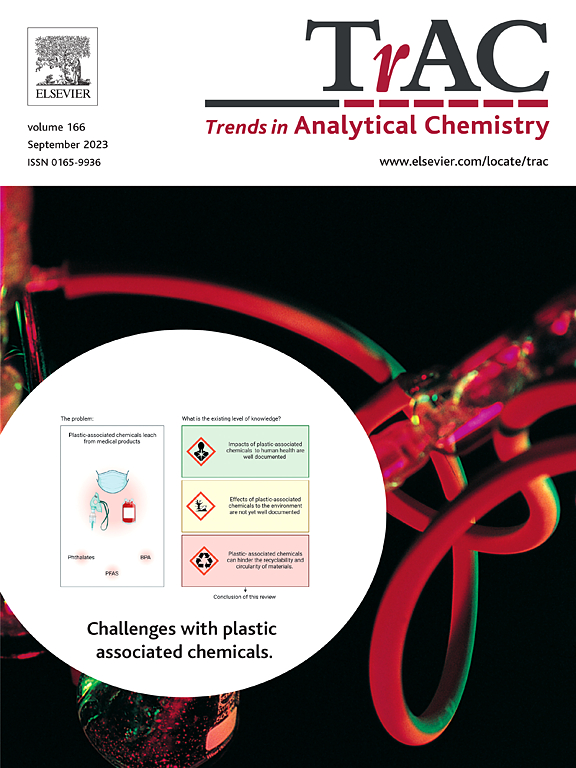人工智能在医疗应用电化学传感器开发中的地位--综述
IF 11.8
1区 化学
Q1 CHEMISTRY, ANALYTICAL
引用次数: 0
摘要
电化学传感器(E-sensors)市场趋势表明,生物医学应用是一个重要的市场增长点,对个性化治疗具有重要影响。鉴于个体之间的差异很大,关键是要认识到生物样本的检测仍局限于实验室设置。虽然原始实验数据的细微变化超出了人类的处理能力,但与传感器识别设计、矩阵干扰和预测任务相关的一些问题可以由人工智能工具来协助解决。然而,电子传感器提供的用于机器学习(ML)的数据在文献中并不常见,但由于测量可以实时完成,并能识别趋势和模式,同时将人类驱动的决策保持在环路中,因此这一主题非常有价值。在这项工作中,针对人工智能工具可以解决的具体任务,对人工智能辅助传感器进行了批判性分析。从概念设计到最终结果的数据流都与电子传感器的设计有关。此外,还从人工智能的角度对为生物医学应用而设计的可穿戴传感器进行了批判性审查,强调了这一主题的局限性以及 "有前途 "这一说法在此背景下的含义。本文章由计算机程序翻译,如有差异,请以英文原文为准。

Where artificial intelligence stands in the development of electrochemical sensors for healthcare applications-A review
The electrochemical sensor (E-sensors) market trends have identified the biomedical applications as a significant market growth with impact on personalized therapy. Given the wide variability among individuals, a key point is to acknowledge that the assays in biological samples are still limited to laboratory setup. While slight changes in the raw experimental data are beyond human capability to process, some issues related to the design of sensors identification, matrix interference, and prediction tasks can be assisted by AI tools. However, the data delivered by E-sensors for Machine Learning (ML) is not common in literature, but since the measurements can be done in real time and can identify trends and patterns, while keeping human-driven decisions in the loop, this topic is invaluable. In this work, a critical analysis of the AI-assisted sensors was performed regarding the specific tasks that can be solved by AI tools. The data flow from the design of the concept to the final results was presented related to the elaboration of E-sensors. Additionally, wearable sensors designed for biomedical applications were critically reviewed from the perspective of AI highlighting the limitations on this topic and what does the “promising” statement mean in this context.
求助全文
通过发布文献求助,成功后即可免费获取论文全文。
去求助
来源期刊

Trends in Analytical Chemistry
化学-分析化学
CiteScore
20.00
自引率
4.60%
发文量
257
审稿时长
3.4 months
期刊介绍:
TrAC publishes succinct and critical overviews of recent advancements in analytical chemistry, designed to assist analytical chemists and other users of analytical techniques. These reviews offer excellent, up-to-date, and timely coverage of various topics within analytical chemistry. Encompassing areas such as analytical instrumentation, biomedical analysis, biomolecular analysis, biosensors, chemical analysis, chemometrics, clinical chemistry, drug discovery, environmental analysis and monitoring, food analysis, forensic science, laboratory automation, materials science, metabolomics, pesticide-residue analysis, pharmaceutical analysis, proteomics, surface science, and water analysis and monitoring, these critical reviews provide comprehensive insights for practitioners in the field.
 求助内容:
求助内容: 应助结果提醒方式:
应助结果提醒方式:


